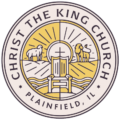In yesterday’s sermon on Isaiah 2:1-5, Brett introduced the prominent place that mountains held in the religious sensibilities of the Ancient Near East. This may have begun because Eden was on raised ground. Ezekiel 28 refers to “the garden of God” also as “the holy mountain of God”. Also Genesis 2 describes the Garden of Eden as containing the source of a river that would divide into four rivers, thus requiring elevation. The ancient Sumerians pictured their pagan pantheon as dwelling in an elevated “Garden of the Gods”, and subsequent pagan cosmologies followed suit (think of Mount Olympus, as a familiar example).
While the true God is by no means limited to physical “home” like Marduk or Baal, He did, in Israelite history, deign to meet His people on mountains in forms that they would recognize. After the flood, Mount Ararat is where God made covenant with a renewed humanity. In Exodus, Mount Sinai is where God made covenant with the people of Israel, revealing His character, judgments, and promises more specifically through the law given to Moses. His glory was even seen by the elders of Israel, who were invited to commune with Him there (Ex. 24:9-11). In 1 Kings, Elijah challenged the false prophets on Mount Carmel, a mountain sacred for the worship of Baal. After the true God, Yahweh, there proclaimed His supremacy in power, He shortly thereafter met the weary and despondent Elijah in gentleness back at Mount Sinai.
Mountains therefore could be terrifying places in the Ancient Near East. The anger of a deity was nothing to be trifled with. And conversely, for those welcomed, mountains could be viewed as places of refuge and celebration. Such became the case for Mount Zion once King David made his capital in Jerusalem and his son, Solomon, built the temple. Significantly, this location is likely the same as “Mount Moriah” where Abraham in Genesis 22 was shown, “On the mount of the LORD it shall be provided.” As Brett mentioned, Mount Zion was a relatively low mountain compared to others in the region. But it’s importance was much bigger and its influence was growing, as pictured by Isaiah.
In early 2021 Robert was preaching through the Psalms of Ascent. Those are songs of meaningful reflection and celebration that originally were used by worshippers going up to the Temple Mount. Some psalms, like #68, actually celebrate the supremacy of Mount Zion to other peaks (in this case, Bashan). Perhaps the most surprising statement in Psalm 68 is in verse 17: “The Lord is among them; Sinai is now in the sanctuary.” What? Two mountains are combining? You can’t do that! But God has done that. The holy terror and majestic authority revealed at Sinai has made its home on Mount Zion, where the merciful provision of sacrifice and gracious accessibility of God to His people have been established.
That mercy and accessibility were of course revealed most fully in the person of Jesus. He gave a sermon on a mount, revealing God’s law both as more soul-searching than previously thought, and also as simple to fulfill as hungering, thirsting, and embracing meekness. On the Mount of Transfiguration Jesus revealed himself as transcendent in splendor, to be marveled at even by the mountaintop prophets Moses and Elijah. But then he told his disciples to not be afraid. Jesus’ greatest mountain appearance was on the heights of Golgotha. His death and resurrection are the moment when the vision of Daniel 2 began their fulfillment: “A stone was cut out by no human hand, and it…became a great mountain and filled the whole earth.
With all these glimpses of God’s purposes being revealed on mountains, we come to understand that God’s “mountain project” is by no means limited to a physical place. It’s a transcendent reality that will overtake and remake the world. It confronts us like Sinai and the Mount of Transfiguration. It invites us in, like the Temple Mount in full festival. It sends us out like the Great Commission, given on a mountain in Galilee. And nowhere is this all better summarized than Hebrews 12: “For you have not come to what may be touched, a blazing fire and darkness and gloom and a tempest and the sound of a trumpet and a voice whose words made the hearers beg that no further messages be spoken to them…But you have come to Mount Zion and to the city of the living God, the heavenly Jerusalem, and to innumerable angels in festal gathering, and to the assembly of the firstborn who are enrolled in heaven, and to God, the judge of all, and to the spirits of the righteous made perfect, and to Jesus, the mediator of a new covenant…Therefore let us be grateful for receiving a kingdom that cannot be shaken, and thus let us offer to God acceptable worship, with reverence and awe, for our God is a consuming fire.” Or in the words of Isaiah, “Come, let us go up to the mountain of the LORD.”
